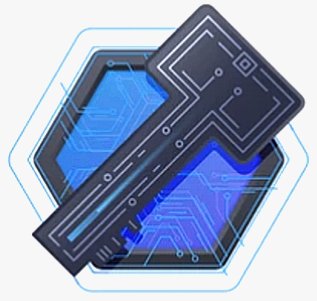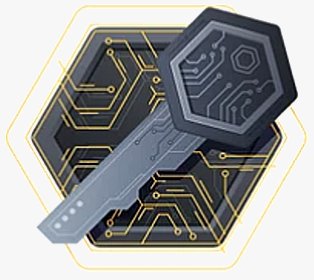Accredited InvestorsAltcoinAnatoli UnitskyAnti-Money Laundering (AML) In CryptoAPIArbitrageArtCoin TokenArticle DirectoryASICAuction Terminology GlossaryBasics of Stock Market InvestingBear MarketBest Crypto Payment Provider In the WorldBitcoinBlockchainBlockchain ConfirmationBlockchain Consensus MechanismBlockchain ForkBlockchain GlossaryBored Ape Yacht ClubBuild a Business That OutperformsBull MarketBuying SkyWay SharesByzantine Fault Tolerance (BFT) ExplainedCasascius CoinCentral Bank Digital Currency (CBDC)Centralized Crypto ExchangeCoinCoinsetCold WalletCollateralCommodity Futures Trading Commission (CFTC)Cross-Chain TechnologyCRUCrypto ExchangeCrypto GlossaryCrypto JokesCrypto Terms to KnowCrypto TickerCryptocurrencyCryptographyCryptojackingCryptounit BlockchainCryptounit GlossaryCryptounit ProgramdApp (Decentralized Application)Dead CoinDecentralized Exchange (DEX)Decentralized Finance (DeFi)Difference Between Bitcoin and EthereumDifferent Ways of Investing MoneyDigital CurrencyDistributed LedgerDo Your Own Research (DYOR)Dollar Cost Averaging (DCA)Dow Jones Industrial Average (DJIA)EncryptionERC-20ERC-721EthereumEvoScentFear Of Missing Out (FOMO)Fear, Uncertainty and Doubt (FUD)Fiat MoneyFNT Fintech CompanyGenesis BlockGlobal Unit PayGlossary of Banking TermsGlossary of Business TermsGlossary of Financial TermsHalvingHODLHot WalletHow Do I Start InvestingHow Rich is Satoshi Nakamoto?How to Create a BlockchainHow to Find Private InvestorsHow to Get Into FintechHow to Program Smart ContractsI Am Thrilled to Be a Part of This Global ProjectInitial Coin Offering (ICO)Initial Public Offering (IPO)Initial Token Offering (ITO)Innovation Basalt TechnologyInnovative Transportation TechnologiesInternational Bank Account Number (IBAN)Investing in Gold Mining StocksInvesting in Gold MiningJagerJoy of Missing Out (JOMO)Know Your Customer (KYC)LedgerLiquidity in CryptocurrencyMaker and Taker Fees in Crypto TradingMarket Capitalization (Market Cap)Meme CoinMetal Credit CardMetaMaskMillenials Now Have Access to Generational WealthMy Best Investment EverNew Digital EvolutionNFT GlossaryOff-Chain TransactionsOn-Chain TransactionsOpen Edition NFTPeer-to-Peer (P2P)Personal Loan GlossaryProbably the Best STO on the MarketProof of Stake (PoS)Real Estate Glossary of TermsReal Estate Investing GlossaryRebase TokenSecurities and Exchange Commission (SEC)Security Token ExchangesSecurity Token Offering (STO)Soulbound Decentralized Identities for Security TokensSoulbound ID Launch by Stobox Proves a SuccessSoulbound TokensStoboxStock Market GlossaryTestimonialsTether Platform and Token (USDT)UnitEx ExchangeUnitsky String TechnologiesUNTBUSDUValidatorWe Started Investing When We Were 25What are Blue Chip NFT?What are Blue Chip Stocks?What are Crypto Assets?What are Crypto Smart Contracts?What are CryptoPunks NFT?What are Digital Assets?What are Digital Collectibles?What are Gas Fees?What are Gas Wars?What are Hashmasks?What are Non Fungible Tokens?What are Non-Sufficient Funds (NSF)?What are Soulbound Tokens (SBT)?What are Stablecoins in Crypto?What are Transactions Per Second (TPS)?What are Utility NFTs?What are Utility Tokens?What Does Burning Crypto Mean?What Does Diamond Hands Mean?What Does Paper Hands Mean?What Does To The Moon Mean?What Does WAGMI Mean?What Happened to Satoshi Nakamoto?What is a 51% Attack?What is a Baby Boomer?What is a Backlink?What is a Banner?What is a Barcode?What is a Bid-Ask Spread in Crypto?What is a Block in Blockchain?What is a Block Reward?What is a Blockchain Address?What is a Blockchain Node?What is a Blockchain Oracle?What is a Blog?What is a Bond?What is a Bot?What is a Broker?What is a Business Accelerator?What is a Cash Cow?What is a Commercial Bank?What is a Commodity?What is a Con?What is a Credit?What is a Credit Limit?What is a Credit Rating?What is a Crypto Airdrop?What is a Crypto Bridge?What is a Crypto Scam?What is a Crypto Token?What is a Crypto Wallet?What is a Crypto Whale?What is a Crypto Winter?What is a Cryptocurrency Public Ledger?What is a Cryptocurrency Roadmap?What is a DAO?What is a Dark Pool?What is a Day Trader?What is a Dead Cat Bounce?What is a Default?What is a Derivative?What is a Digital Credit Card?What is a Fiscal Quarter?What is a Fungible Token?What is a Governance Token?What is a Grace Period?What is a Hard Fork?What is a Hot Wallet?What is a Hybrid Blockchain?What is a Hybrid PoW/PoS?What is a Joint Account?What is a Market Cap?What is a Merkle Tree in Blockchain?What is a Mining Farm?What is a Nonce? What is a PFP NFT?What is a POS System?What is a Prepaid Card?What is a Private Blockchain?What is a Private Key?What is a Public Blockchain?What is a Public Key?What is a Reserve Currency?What is a Ring Signature?What is a Routing Number?What is a Rug Pull in Crypto?What is a Safe Deposit Box?What is a Satoshi?What is a Security Token?What is a Seed Phrase?What is a Shitcoin?What is a Sidechain?What is a Soft Fork?What is a Spot Market?What is a State Bank?What is a SWIFT Code?What is a Tax Identification Number (TIN)?What is a Time Deposit?What is a Transaction Account?What is a Variable Interest Rate?What is a Virtual Assistant (VA)?What is a Virtual Card?What is a Virtual Currency?What is a Visa Card?What is a Whitelist in Crypto?What is a Whitepaper?What is Accounts Payable (AP)?What is AMA in Crypto?What is Amortization?What is an Accrual?What is an ACH Transfer?What is an Actuary?What is an Addendum?What is an Algorithm?What is an Angel Investor?What is an Annuity?What is an Asset?What is an ATM?What is an Atomic Swap?What is an Audit?What is an Avatar?What is an EIN?What is an Embargo?What is an Entrepreneur?What is an IDO (Initial Dex Offering)?What is an Interest Rate?What is an Internet cookie?What is an Investment Bank?What is an NFT Drop?What is an NFT Floor Price?What is an Ommer Block?What is an Orphan Block?What is an Outstanding Check?What is an Overdraft?What is Artificial Intelligence (AI)?What is B2B (Business-to-Business)?What is B2G (Business-to-Government)?What is Bartering?What is Bitcoin Dominance?What is Bitcoin Pizza Day?What is Blockchain Immutability?What is Blockchain Used For?What is BRICS?What is Business-to-Consumer (B2C)?What is C2C (Customer to Customer)?What is Capitalism?What is Catfishing?What is CFD Trading?What is Check Kiting?What is Cloud Mining?What is Communism?What is Content Marketing?What is Decentralization in Blockchain?What is DeFi in Crypto?What is Delisting?What is Depreciation?What is Digital Marketing?What is Diversification?What is Double Spending?What is Dumb Money?What is Dumping?What is Earnings Per Share (EPS)?What is Economics?What is Email Marketing?What is Equity?What is Etherscan?What is Fintech?What is Foreign currency?What is Forex?What is Fundamental Analysis (FA)?What is GameFi?What is Generative Art NFT?What is Gwei?What is Hard Currency?What is Hash Rate?What is Hashing in Blockchain?What is Inflation?What is Initial Game Offering (IGO)?What is Interest?What is Interest Income?What is Mainnet?What is Mastercard?What is Metaverse in Crypto?What is Mining in Cryptocurrency?What is Minting NFT?What is Mobile Banking?What is Money Laundering?What is NFT Alpha?What is NFT Metadata?What is NFT Rarity?What is NGMI Meaning?What is Nominal Interest Rate?What is Online Banking?What is Open-End Credit?What is OpenSea NFT Marketplace?What is Personal Identification Number (PIN)?What is Play-to-Earn?What is Polygon?What is Proof of Authority (PoA)?What is Proof of Work (PoW)?What is Public Key Cryptography?What is Pump and Dump?What is Quantum Computing?What is Refinancing?What is Retail Banking?What is Ripple?What is Sharding?What is Slippage in Crypto?What is Smart Money?What is Solvency?What is Soulbound ID?What is SSL?What is Staking in Cryptocurrency?What is Technical Analysis (TA)?What is Testnet?What is the Ask Price?What is the Better Business Bureau (BBB)?What is the Bid Price?What is the Dark Web?What is the InterPlanetary File System (IPFS)?What is the Gold Standard?What is the Lightning Network?What is the Prime Rate?What is the Sandbox?What is the Secondary Market?What is the World Bank?What is Tier 1 Capital?What is Tokenomics?What is TRC-20?What is Universal Banking?What is Unspent Transaction Output (UTXO)?What is Usury?What is Volatility in Crypto?What is Wash Trading?What is Web3?What is Whisper?What is XRP?What is Zero-Knowledge Proof (ZKP)?Who is Beeple?Who is Satoshi Nakamoto?Who is Vitalik Buterin?Why Tokenization is a Safe HavenWhy You Should Try Your Hand at Trading
Cryptography
- Home
- Crypto Glossary
- Cryptography
Computer technology advancements have increased access to data, but also its vulnerability to threats like theft and corruption. Cryptography, the practice of encrypting information, offers protection against these risks.

Though the concept of encryption is not new, with masked messages dating back before the digital era, the widespread use of computing devices has advanced the science of cryptography.
What is Cryptography?
Cryptography is the art and study of mechanisms for secure communication.
It involves taking information, concealing the true meaning of that information from everyone else, delivering that secret message to another party, and letting that party to disclose the hidden message using a specific key.
Advances in computer technology have made data more accessible, which has both a positive and negative impact. Online data is vulnerable to a variety of dangers, including theft and corruption. Cryptography is a method that has enabled information to be protected from some of the hazards involved with data storage and transmission.
To say the notion of encrypting data is novel is an understatement. People have been concealing communications since before the internet era to avoid undesired audiences from reading them. However, the rising usage of digital devices pushed the science of encryption to new heights.
Cryptography is the study of concealing information. More precisely, contemporary cryptography employs mathematical theories and computing to encrypt and decode data or to ensure the integrity and validity of information. The encryption involves converting plaintext into ciphertext using an unreadable encryption procedure. By doing this, it is possible to ensure that the data supplied can only be decrypted and decoded by a decryption key.
Understanding the operation of cryptography is essential to comprehending its significance in cryptocurrency systems. Most blockchain systems rely on a specific combination of cryptographic tricks to work as a decentralized and public ledger where extremely secure digital transactions may be carried out.
Important subfields of modern cryptography include symmetric encryption, asymmetric encryption, hash functions, and digital signatures, which will be discussed later.
Hash functions and asymmetric encryption are the main tools used by blockchains to securely connect one block to another block inside a blockchain. Transaction data is also reliably and immutably stored on a blockchain, which maintains blockchains permanent, unchangeable, and tamper-proof.
Since cryptography is a fundamental component of blockchain technology, it is important for all cryptocurrencies. Decentralized digital currencies were made possible by the application of cryptographic proofs to distributed networks, allowing for the development of trustless economic systems.
Short History
The first cryptographic system dates back to 400 BC, created by the Spartans who used a "scytale" to scramble messages. The recipient could then use their own scytale to unscramble the message, keeping it hidden from enemies.
Julius Caesar also employed a similar technique, shifting each letter by a certain number of positions in the alphabet, known as the Caesar cipher. The number of positions, called the "key," was known by both the sender and recipient, but this also meant that if an attacker obtained the key, all messages could be decrypted.
These early encryption methods were based on symmetric cryptography, which relies on a single shared key between the parties. This made key exchange a challenge, especially over long distances, and made the system vulnerable to interception by attackers.
To address these issues, cryptographers developed asymmetric cryptography, the type used in modern cryptocurrencies, which uses two different keys, one for encryption and one for decryption, to securely exchange information.
Symmetric, Asymmetric Cryptography and Hash Functions
Cryptographic algorithms can be classified into three categories based on key usage: symmetric encryption, asymmetric encryption, and hash functions. Each of these serve unique and complementary purposes. For instance, asymmetric encryption generates private/public key pairs, and hash functions create unique digital signatures.
Symmetric Cryptography - Symmetric cryptography, as demonstrated by early encryption systems, uses only one key for encryption and decryption. Both parties must have prior knowledge of the key to use the system. As we already saw, this system can pose difficulties, and increases the risk of interception by unauthorized parties. To overcome these issues, cryptographers introduced asymmetric cryptography, which is now utilized in the field of cryptocurrencies. This method uses different keys for encryption and decryption, enabling secure communication.
Asymmetric Cryptography - Asymmetric cryptography, also known as public-key cryptography, is a type of cryptography that uses two different keys for encryption and decryption. One key, called the public key, is used for encryption, while the other key, called the private key, is used for decryption. This allows for secure communication, as the private key can be kept secret while the public key can be shared.
One of the advantages of asymmetric cryptography is that it eliminates the need for both parties to exchange the key beforehand, making it much easier for people to securely communicate over long distances. It also makes it more difficult for attackers to intercept and decrypt the message, as the private key must be kept secure.
Hash Functions - Hash functions are mathematical algorithms that take an input (often referred to as a message or data) and produce a fixed-length output, known as a hash or a digest. The hash is unique to the input, and even a small change in the input will result in a completely different hash. This makes hash functions ideal for detecting any changes made to the data.
Hashing is the process of applying a hash function to a message to create its digital fingerprint. This fingerprint is then used to verify the integrity of the data, as any changes made to the message will result in a different hash. Hashing is widely used in many applications, including password storage, digital signatures, and data structures such as hash tables.
One of the main advantages of hash functions is their deterministic nature, meaning that given the same input, the same output will always be produced. This ensures that the integrity of the data can be easily verified by comparing the hash of the original data with the hash of the data after it has been received.

Pros and Cons of Cryptography in Crypto
Cryptography plays a critical role in supporting the secure transfer of information in digital transactions, particularly in the world of cryptocurrencies. It helps to secure the details of transactions, ensures that information stored in a blockchain is tamper-proof, and enables peer-to-peer transactions without the need for intermediaries, thus reducing transaction costs.
However, it is important to note that cryptography is a computing function, which means that encrypting large amounts of transaction data can be demanding on electricity. Additionally, cryptocurrency users are required to use a crypto wallet to keep their digital assets secure, and if they lose their private security key, they may lose access to their funds.
Furthermore, the rise of quantum computing, which is more powerful than traditional computing, poses a potential threat to the encryption methods used in cryptocurrencies.
As the world becomes increasingly digitized, cryptography will continue to be a crucial field of study for maintaining the security of information and communication.
And, beyond cryptocurrencies, there are many opportunities to invest in the development of cryptography for various industries that rely on it to protect their assets and operations.
Related Articles

Encryption
Encryption is a security technology that scrambles data, such as text, into a secret message that cannot be read by another person.

What is a Public Key?
A public key is a piece of cryptographic code that allows users to receive cryptocurrency into their accounts. The tools needed to ensure the security of the...

What is a Private Key?
A private key, commonly known as a secret key, is a mathematical key used to generate digital signatures and, depending on the algorithm, to decrypt messages or...
- Home
- Crypto Glossary
- Cryptography